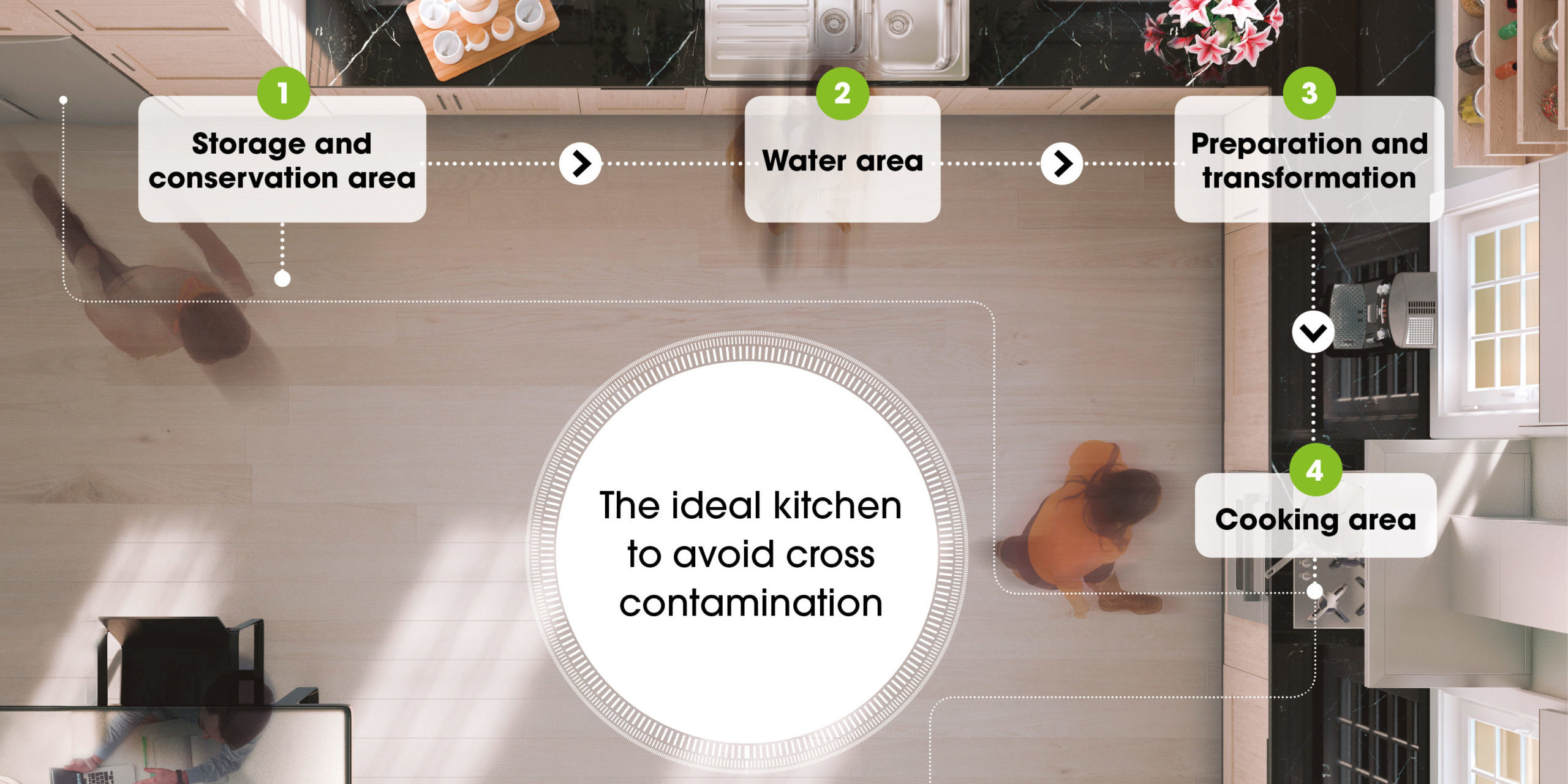Summer is coming and it is important organize the kitchen to prevent cross contamination.
- How to properly handle food
- Take care of your health in the kitchen
With the imminent arrival of summer and the teaching that this pandemic left us, we must be aware of the importance of taking care of our health, therefore, we give you practical advices to design the kitchen in a healthy way to avoid cross contamination.
As we know, cross contamination is one of the main causes of food infections, which is caused by the transmission of pathogenic microorganisms from a contaminated food, mainly a raw food, to another that is not, and that, being already prepared for its consumption, does not have to go through any additional heat treatment.
Principle “moving forward” to prevent cross contamination.
In order to avoid cross contamination between foods, it is important to apply the “forward” principle. It is an organization method, used in restaurants, which is based on a kitchen design that allows food to always go forward, from “dirtier” areas to “cleaner” areas, without crossing or backtracking, during its preparation and transformation. In restoration, the kitchen is projected with three clearly differentiated areas. a) reception b) food storage c) preparation and transformation.
In domestic kitchens, on the other side, the available space tends to be more limited, which is why we share keys to apply this principle:
1. Follow a logical sequence of work in which the food passes sequentially from its most contaminated stage or raw state, to its final consumption stage, without having to go back to an earlier phase. For this, it is possible to allocate a small area of the kitchen counter to the raw food handling phase, for example, the area closest to the sink, and another to place the food once it is cooked.
The recommended sequence to consider when designing a kitchen is as follows:
- Food storage and conservation area
- Wash zone
- Preparation and transformation
- Cooking area and plating
2. Avoid contact between raw and cooked food, both directly and through kitchen equipment, utensils and containers. For this, we can clean the equipment, such as blenders, when changing food and also use some utensils and containers for raw food and others for cooked food.
3. Avoid crossing waste and dirty utensils with food. To do this, we must not accumulate waste, such as packaging or dirty utensils, in the area of kitchen countertop where food is going to be handled.
4. Avoid crossing debris or dirty utensils with clean utensils.
5. Avoid contact between dirty countertops or cutting boards and food, especially if they are already cooked or prepared for final consumption.
6. Wash your hands after handling raw food, especially if we are going to handle food that is already cooked or ready to eat.
7. Avoid using dirty kitchen towels or using single-use kitchen paper.
8. Place cooked or ready-to-eat foods in the refrigerator on the upper shelves and raw foods, such as meat and fish, on the lower shelves.
Cross contamination involves many factors to which we must pay attention to avoid food infections: cooking food, storing it, hygiene of the utensils and of who cooks, also well as washing the ingredients before use.
Take care of our health is a priority and for this it is important to carry out a correct handling of food.
